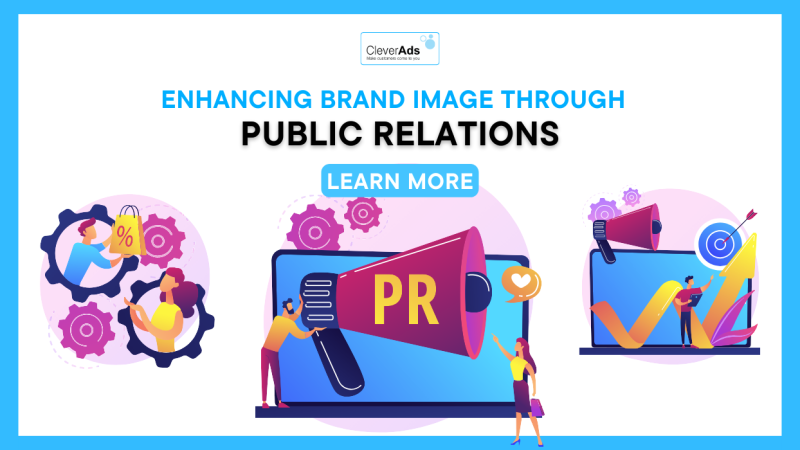Top 6 indicators and methods to evaluate marketing effectiveness for businesses today

What are the indicators of marketing effectiveness? Measuring marketing effectiveness indicators is essential for businesses to know whether the company has used the right Marketing campaign or not. From there, propose adjustment and replacement plans to suit the actual situation. Let’s find out the top 6 indicators and methods to evaluate marketing effectiveness for businesses today in the following article
1. What are the indicators of marketing effectiveness?
Marketing effectiveness indicators are indicators obtained when measuring the process of marketing activities, which can be said to be a tool to evaluate the performance of marketing campaigns.
This index helps businesses know if the company has used a suitable marketing campaign or not, thereby offering adjustment and replacement plans to suit the actual situation and help overcome challenges. effective competitors.
Some indicators of marketing effectiveness can be mentioned such as Leads (potential customers), CPL (cost per lead)…
2. Why do businesses need marketing performance indicators?
Marketing performance indicators are extremely important, measuring the main indicators is the key to optimizing all processes, especially in marketing campaigns.
Then you can see what works and what doesn’t, understand which channels are helping you bring in the most leads, you can increase your budget on those channels, and target them more effectively. more effective.
Great benefits when businesses measure marketing performance indicators:
- Evaluate the effectiveness: Helping businesses evaluate how the final result of a Marketing campaign compares to the original goal from which to draw lessons to improve for future campaigns.
- Instant correction: Help businesses measure even during execution without having to wait until the end of the Marketing campaign. As a result, enterprises can soon detect problems, risks, and advantages in the execution time, thereby quickly updating and making timely improvements, corrections, upgrades, changes, etc., and promoting the plan accordingly.
- Assess customer/market response: for new products, new services, target customers, potential markets, and new campaigns. From there, businesses will also easily assess the tastes and shopping trends, and choose products and services of consumers.
- Compare: Is it effective to help businesses compare results against industry performance indicators? Besides the industry performance index, enterprises can also compare with the previously established reference system. Thanks to that, businesses will soon find out if the campaign is having problems. Why are the results not achieved compared to the industry performance index or the enterprise reference system?
3. 6 Indicators of marketing effectiveness for businesses
3.1 CAC – Customer Acquisition Cost (Cost a business needs to spend to acquire a new customer)
This is also an important metric to measure the marketing effectiveness of the process.
This Marketing metric is calculated by dividing the total monthly budget of the Marketing department by the number of new customers acquired in that month.
The calculation formula is as follows:
Marketing and Sales Expenses = Marketing Costs + Labor Costs + Commissions + Bonuses + Incidents
New customers = Number of new customers in a month, quarter, or year.
Cost of Acquiring a New Customer – CAC = Marketing and Sales Costs/New Customers
From there, you will know how much to pay per customer to be able to turn them from regular visitors to a customer willing to pay for your product.
3.2 A%-CAC (Agency % of customer acquisition cost): percentage of new customers coming from the business’s resellers
This index shows businesses how the performance of agents is affecting the company’s CAC. A% – The increase in CAC may be because the business’s agents are operating inefficiently.
Calculation: Take the total allocated marketing expenses and divide it by the total sales and marketing expenses.
The calculation formula is as follows:
Marketing expenses = Total cost of advertising and marketing programs by month, quarter, and year.
Total Sales and Marketing costs = Marketing costs + Labor costs + Commissions/bonuses + Per capita expenses per month, quarter, or year
A%-CAC = Marketing expenses allocated to agents/Total sales and marketing expenses
3.3 (LTV: CAC): LTV – Lifetime value: indicators in e-commerce
This metric is a basic revenue measurement tool that measures the value of each app as well as each user over the life of that app, which can be measured in terms of currency or time, social sharing, or article.
How to calculate LTV: CAC (ROI): need to calculate the long-term value, CAC, and find the ratio of the two.
The formula is as follows: ROI = LTV: CAC
Every business is interested in profit, but more importantly, Return on Investment (ROI) or return on investment. The higher the ROI, the better your client’s sales and marketing team will achieve. Spending more on sales and marketing will reduce your LTV: CAC ratio, but can help accelerate your company’s growth.
3.4 Payback period CAC
This is the time it takes for your customer to complete the payment for a product/service before they become a new customer.
In fact, with installment customers, businesses often expect a payback period of fewer than 12 months. The shorter the installment period, the more likely a customer will pay for a new product or service.
Calculation: Take the CAC and divide it by the customer profit-adjusted revenue each month for one customer.
Recipe:
Discount-adjusted revenue = Average customer pay per month
Payback Period CAC = Margin-CAC Adjusted Revenue.
3.5 Ratio of organic customers
These are customers who bring revenue to businesses by offline methods, agents distributing products and services, etc.
Calculation: Choose a specified period, take all new customers, and divide by the number of customers obtained from the marketing program.
This metric illustrates the impact your marketing team’s lead generation efforts have on acquiring new customers. This percentage is based on the relationship and structure of sales and marketing with the customer, so the ideal rate will vary depending on the customer’s business model.
3.6 Percentage of customers obtained from marketing

This marketing performance metric includes all new customers the marketing team has interacted with and converted into Leads, or at any point in the sales process.
This metric takes into account the impact of lead reseller marketing throughout their purchase lifecycle. It can show how effective your marketing team is at generating new leads, taking care of those leads, and helping your customer/brand’s sales team. close the transaction. It gives the CEO or CFO’s client a big picture looking at the overall impact marketing has on the sales process.
Calculation: Take all new customers accumulated by customers in a certain period and find out what percentage of them have any interaction with your marketing programs to become Leads.
Formula: Total number of new customers interacting with marketing Total number of new customers = Marketing affects customers %.
4. Indicators to evaluate the effectiveness of marketing on Social

4.1 Audience Growth Rate
- Audience Growth Rate: This metric measures the growth of your brand’s followers on social media. It shows how quickly your social media campaign can attract followers. From there, you can compare whether your follower growth rate surpasses that of your competitors.
- Reach: This metric shows how many people have viewed a post since it went online. These potential customers may view your business’s ad on social media, in magazines, on television, or through another marketing channel.
- Social share of voice: This is an important marketing performance indicator that reflects the frequency of your brand’s appearance and mention compared to competitors on the website and many different marketing channels. Including customer interaction and brand recognition to help businesses evaluate the level of advertising and visits on social networking sites or traffic on their website.
4.2 Engagement
Engagement is calculated as the number of people who like, share, click, and comment and people who watched your video or clicked on the link or image you posted. Or even when you click on the commenter’s name, click like for a comment, click on the Page name, or even give negative feedback to Facebook by reporting the content of the posted post, it is also counted in the interaction index in the article.
This is the 2nd most important metric after reach per campaign. If reach tells you how many people see your content, then engagement is the number of people who have interacted with your content on social media.
- Average engagement rate: This is the percentage of the audience that took engagement actions, like liking, sharing, and commenting, on a post compared to the total number of followers of the post. Friend.
- Applause Rate is the number of approval actions, such as “like” or “heart”, that a post receives.
- The amplification rate measures the average share of each post out of the total followers. The higher this ratio, the more people are willing to connect with your brand.
- Virality rate is the ratio of the number of times your post has been shared to the total number of impressions that post has over a period of time. The virality rate has a deeper effect on getting the message across. evaluate the success of a post.
4.3 Convertibility
This metric represents how likely your content is to convert the way you need it, to make timely adjustments when needed.
- Click-Through Rate is how often viewers click on the call-to-action link in your post.
- Cost-Per-Click is the amount you pay for each click on your promoted social media post.
- And Conversion Rate is used to measure the rate at which customers take those actions.
Read more: What is Online Marketing? Types of Online Marketing
5. Methods to measure marketing effectiveness metrics
5.1 Google Analytics
Google Analytics is one of Google’s free SEO tools. It allows you to create detailed statistics about users when entering a website. Google Analytics also collects data about your website’s digital presence.
5.2 Conversion rate
Conversion rate is one of the effective methods to identify the level of spending in marketing and the impact of the program on the business. Therefore, startups need to pay attention and regularly check the conversion rate in their marketing campaigns.
5.3 Cost of having a customer
There are many businesses that only track the cost of generating an order but pay little attention to the cost of acquiring a customer. This cost is actually quite difficult to calculate and quantify with a specific formula. However, if the cost of acquiring a customer is higher than the long-term value, your business is at risk.
5.4 Sources of social media information
You can measure the success of your PR campaign by looking at the number of new followers and average monthly post reach on your brand’s social media channels. Likes, retweets, and shares can help measure post-campaign engagement across social media channels.
5.5 Customer Engagement Rate
Most businesses, whether starting or growing, focus on attracting customers but do not pay too much attention to customer engagement rates. Ask questions, like: “How often do customers use the product? When will they buy the next product?
Businesses with a high customer engagement rate can focus on taking care of and earning more from loyal customers. So, right from the start of your business, focus on metrics that measure marketing effectiveness.
5.6 Payback Points
When it comes to marketing in general or ongoing campaigns in particular, the main thing to pay attention to and always care about is profit. If you calculate the break-even point from the very beginning of the marketing campaign, it is possible to assess whether the ideas really make sense and will achieve a business goal. Regularly checking these marketing metrics will help businesses understand the direction of development and focus more on the ultimate goal of the campaign.
5.7 Rate of customer acquisition from advertising
The ultimate goal of advertising campaigns is to attract customers to click or register, and call the business. This marketing metric will help you decide and evaluate the cost and success of your advertising.
5.8 Click-through rate
Click-through rate (CTR) is a very important measurement, considered one of the basic metrics when evaluating the success of online marketing campaigns.
The success of online marketing campaigns lies in the click-through rate. The higher the click-through rate, the lower the marketing costs will be. It is used in Google Adwords and Facebook Ads.
Read more: Top 9 Email Marketing evaluation metrics
6. Conclusion
It can be said that marketing is an effective assistant in the process of introducing services or products of a business to customers. With the above information about the above indicators and methods of evaluating marketing effectiveness, Clever Ads hopes that managers and corporate marketing teams can find effective solutions while still optimizing costs for their businesses.


